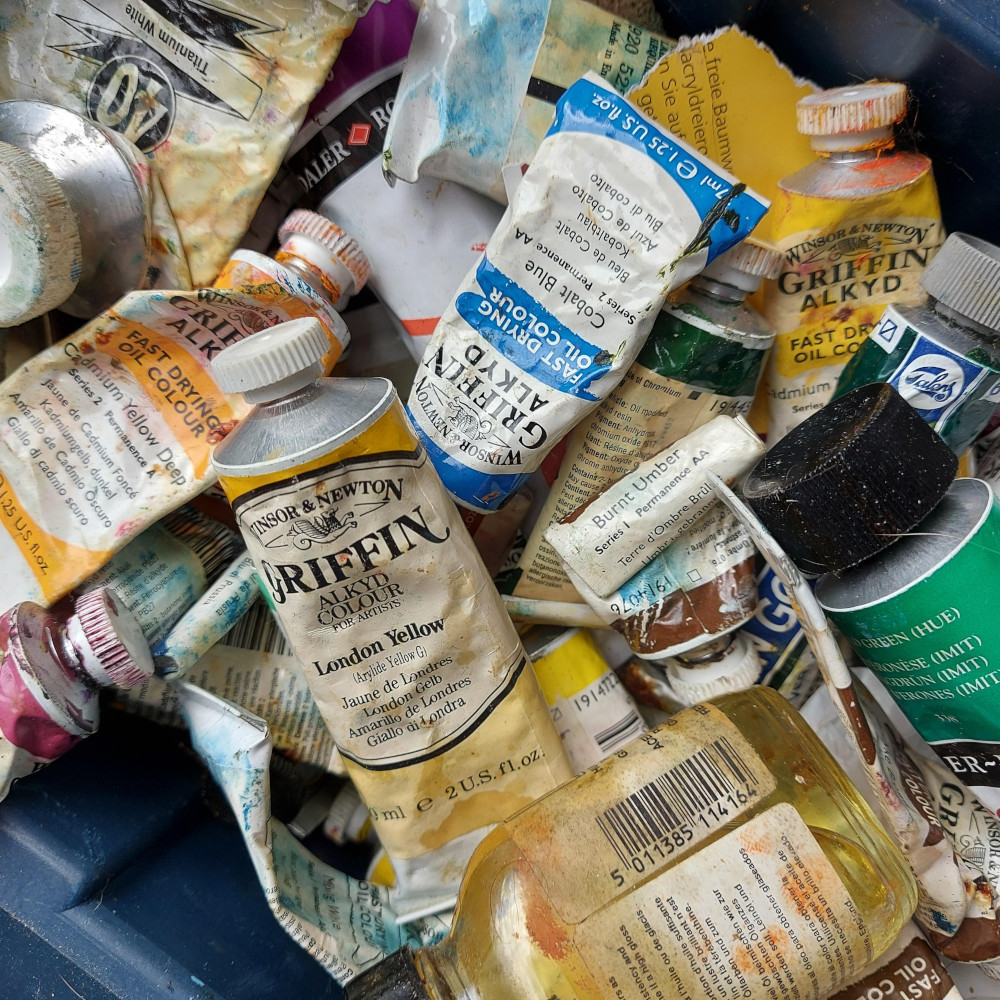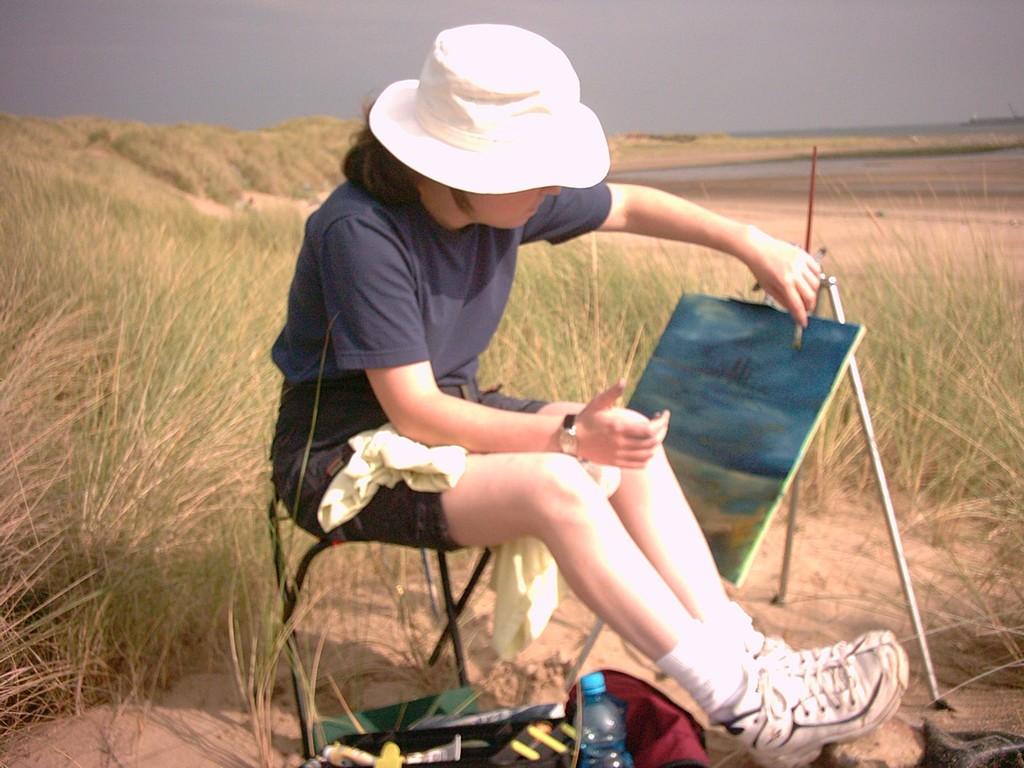Painting outdoors can feel daunting, here are my top 10 tips when painting outdoors. When you go to paint outdoors it may feel like you are preparing for a trek up the Himalayas, even if you are only going an hour’s journey away from home. Wherever you decide to go you must take your mobile phone with you and tell people where you are going in advance, just in case.
1. Try to decide in advance what colours and equipment you are going to use.
This will reduce the amount of paint you take with you. We all have our favourites and colours and brushes that we rarely use. Take your favourites and leave the ones you rarely use at home, you can always add that colour at home, if you think you missed something.


2. A few small plastic bags
When you are out in the middle of nowhere, you cannot clean your brushes as well as you should, so to prevent them drying out during the journey home, I use a small plastic bag to protect the brushes. I put the brushes in the bag and tie the bag tightly, removing as much air as possible. Though this is not the most environmentally friendly item, I reuse a grocery bag and it is less harmful than disposing of dried brushes that cannot be used again.
3. A small foldable chair (as light weight as possible)
When I paint outdoors, I’m often out for hours and it is often useful to take the weight off your legs. Though I also sit on the ground if conditions allow, I prefer to paint standing up, but it’s useful to be able to sit, if nothing else you can admire the progress you’ve made on your wonderful painting (this is ‘tongue in cheek’ as most artist are self-deprecating).

I sometimes use combined folding seat and backpack.
I inherited mine, but there are a range of them on the market. They are great, just be careful not to overload it as it can get very heavy.
4. Your camera/smart phone or sketch book
The main difference when painting outdoors is that the light and colours change very quickly. I use my camera on my phone as an aide-mémoire, rather than something to paint from. I take extra photos, at different times of the day, that I think might be interesting for another painting indoors. I also take some close-up photos in case I need to refer to them when finishing off the painting indoors.
5. Something to tie your canvas to your easel
Depending on where you are, the wind can play havoc with your painting. One time a gust of wind blew my canvas from my easel and it fell on the ground. I managed to restore the colours, however it left authentic sand embedded within the painting. I didn’t learn my lesson though, as at another time I also ended up with blue hair as I instinctively stopped the canvas from falling down with my head.
6. A big polybag to transport your wet canvas back home
I use a car boot/trunk sheet and reuse it all the time. Any wet paint that’s on the sheet dries out before the next time I go out. I’ve also used an old shower curtain.
7. Remember to take some food with you
Make sure you can eat it with dirty hands, I don’t know about you, but I always somehow manage to get paint all over my hands. I honestly don’t know how that happens as I do use a brush! Remember to take any waste back home with you and not leave any behind. Oh, I almost forgot, if the weather is scheduled to be hot, don’t take chocolate biscuits with you as they melt in the heat and you end up with hands that are both full of paint and chocolate (so you can’t lick your fingers).
8. Check online – is an event happening at the location that you are heading to?
Before you leave your house, check online to see if there is an event happening at the location that you are heading to. The last thing you want is to go out to paint in the middle of nowhere for some peace and solace if the Tour de Yorkshire is whizzing past your location with hundreds of visitors on the roads! Though it could also be a great opportunity if you want to paint the atmosphere of the Tour and the crowds.
9. Take water
You need to take water with you, some for painting if you use acrylics or watercolours, and some to drink. Make sure you remain hydrated. There have been times when I’ve been so focused on the painting, that I forgot to drink enough. When I’m painting at home, I don’t normally have to worry about comfort breaks, but when you paint outdoors you need to know where your nearest toilet facilities are. Alternatively take an appropriate receptacle to use and take back with you.
10. When you paint outdoors, your time is limited at that location
Whether the weather will change or the daylight end or your lift back home has arrived, you will feel internally pressured to paint, paint, paint and not stop. Do stop and take a break. I find it very helpful to have a short break every so often as it helps me to rejuvenate and to look at the progress I made up to that point. When I have a break I sit back (the chair comes in useful again) and a bit away from the painting, so that when I do return to the painting I can see more easily where I need to go next. I have found that if I concentrate too much on the painting, my eyes get tired and stop seeing any detail.
Oh, the places you will go. Whether you go near or far, I hope that you enjoy the experience.
Please comment below. What is one of your essentials that I haven’t mentioned?
